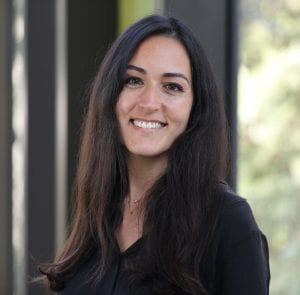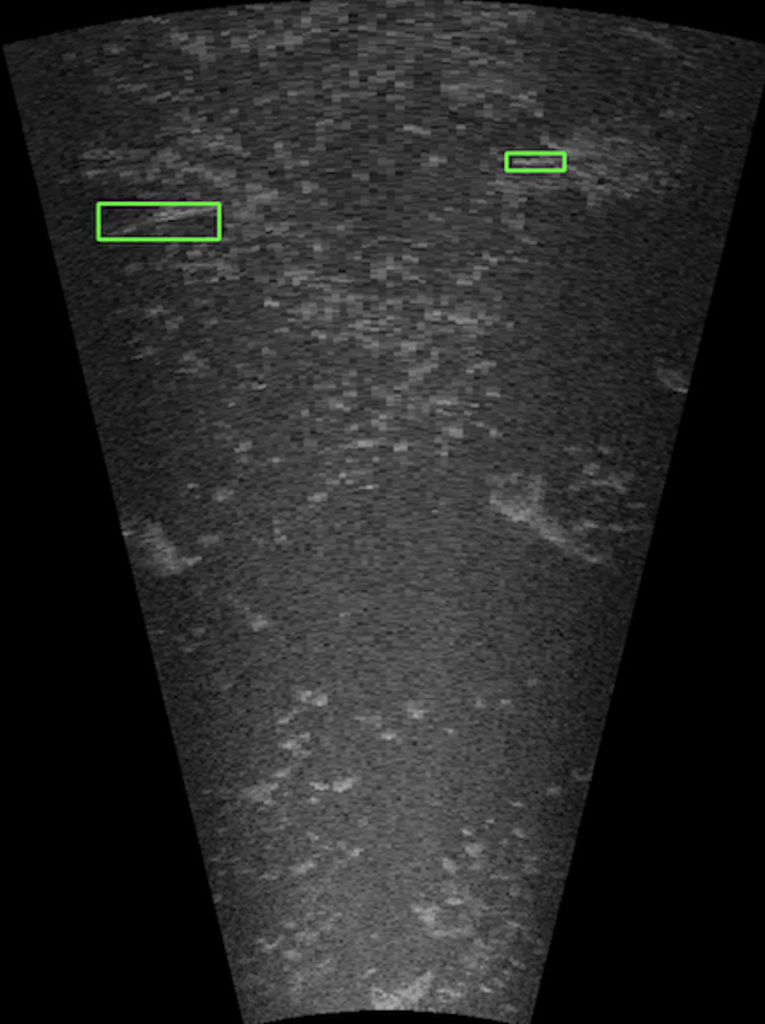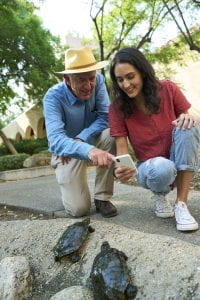
Suzanne Stathatos
Suzanne Stathatos didn’t take her first computer science class until junior year of undergrad. Although she received her Bachelor’s in history, Stathatos couldn’t help but explore computer science more after the first class piqued her interest. Stathatos jumped into her Master’s program in Computer Science at Stanford before starting her industry career as software engineer.
Yet something was still missing. “I’ve always been the kind of person that wants to work towards– like it sounds super cheeseball– but towards making the world a better place,” Stathatos explained. This is what led Stathatos to get involved in the intersection of computer science and the environment. Now a PhD student in Computing and Mathematical Sciences at Caltech, Stathatos focuses both on studying computer vision’s application to environmental monitoring and making computer vision more widely accessible to environmentalists who don’t have a computing background.
Stathatos’s current research focuses on developing artificial intelligence to monitor fish populations using videos from sonar cameras underwater. Stathatos uses computer vision– a field of artificial intelligence that works with data such as photos and videos– to detect which objects are fish.
Stathatos’ research finds that using computer vision is the most accurate and efficient way to monitor fish populations. Being able to accurately monitor fish populations is key to verifying both population stability in environmental conditions that aren’t changing and understanding if climate change and climate actions are having an impact. Currently, departments like the U.S. Department of Fish and Wildlife manually watch “hours and hours” of footage, counting the fish– this is time consuming and costly, and most government agencies are already underfunded. Fish monitoring sometimes gets pushed aside completely. Monitoring via computer vision resolves these problems.

A sonar image from Stathatos’ research with two fish indicated by green boxes.
However, creating a computer vision model to monitor fish isn’t an easy task. Stathatos and the team she’s part of quickly learned that their computer vision system needed extensive training to be able to detect fish from sonar. Why? Well, Stathatos explained that sonar imagery looks similar to an ultrasound video. Even though an ultrasound tech is usually confident in what they’re seeing, whenever Stathatos has seen an ultrasound image or video she’s thinking “What? How do you see any of that?” Laughing, Stathatos remarked that if you ask any average person where the fish are in a sonar image, they’d have real difficulty finding it. Computers have this problem too. Thankfully, computer vision systems get better with practice.
Ultimately, Stathatos wants her research to be of value to others. She explained that “it would be really cool to see how my research can be used by resource managers to decide how to best allocate their resources.” Stathatos also sees value in making her research project more widely applicable, so she is working to adapt the computer vision model to work for different rivers that are in new locations with fish of different sizes, swim patterns, and population densities.
Stathatos wants to do more than build her own computer vision models. She wants to help other people build and use them too. To do this, she is working to ensure that computer vision tools are accessible for other environmental researchers and workers. After all, Stathatos emphasized, “your research is really only as good as the person who can take it and use it.” For this reason, she has taught the Computer Vision Methods for Ecology (CV4Ecology) workshop for two years.

2022 and 2023 CV4Ecology workshop group photos.
The CV4Ecology summer workshop teaches post-doc level ecologists, PhD students, and other environmental researchers the basics of computer vision in just three weeks. Participants come in with their own predefined projects, ranging from detecting whale species with audio data to examining insect behavior with stationary cameras. By the end of the workshop, individuals have a start on coding their project and know how to find and use relevant computer vision resources. They also become part of a community of peers that they can rely on. It’s especially exciting for Stathatos to know that many CV4Ecology participants go back to their own universities and research laboratories and teach what they’ve learned to others.
Stathatos’ summer 2023 CV4Ecology cohort: the ‘Pixellads’.
After talking to Stathatos, it’s easy to see why CV4Ecology is a success. Stathatos’ entire face lit up when asked about the course. “I’ll start this off by saying I have one picture on my desk…It’s me and all my cohort people,” Stathatos stated proudly while holding up a framed photo of her summer 2023 CV4Ecology cohort.
It is clear that Stathatos has many strengths that lead her to be a phenomenal mentor to others, humility being one of them. In fact, when asked to share some of her strengths Stathatos first asked if she could speak to the strengths of the other researchers she works with on the fish monitoring project. Even if she wouldn’t say it all explicitly, she has a strong combination of passion, technical skills, and communication abilities (which she’d like to attribute to her history degree) that contribute to her successes.
Stathatos looks forward to seeing all the new ways computer vision can be applied to the environment. Though she’s currently looking at fish, she noted that anything from beavers to bears could be counted in the river– and beyond. The list goes on and on with countless other opportunities of environmental monitoring. Stathatos herself isn’t even quite sure what she’ll do next. Luckily, that’s never stopped her before.

Stathatos with her advisor, Pietro Perona, using the inaturalist app- which uses some of Perona’s computer vision work- to ID turtle species at CalTech.
Image credits: Suzanne Stathatos